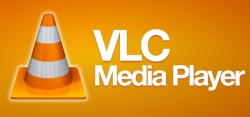Difference between revisions of "VLC.js"
| Line 11: | Line 11: | ||
I firmly believe that this project, fundamentally, would change the relationship of audio/video to the web. | I firmly believe that this project, fundamentally, would change the relationship of audio/video to the web. | ||
= Probable Architecture = | = Probable Architecture = | ||
| Line 23: | Line 21: | ||
* [https://archive.org/details/AvCalibrationNtscDvd Calibration DVD for testing (758mb)] | * [https://archive.org/details/AvCalibrationNtscDvd Calibration DVD for testing (758mb)] | ||
* [http://ascii.textfiles.com/archives/5084 Original post on the VLC.js project] | |||
Revision as of 01:57, 8 November 2016
From the project idea post:
It is my belief that a Javascript (later WebAssembly) port of VLC, the VideoLan Player, will fundamentally change our relationship to a mass of materials and files out there, ones which are played, viewed, or accessed. Just like we had a lot of software locked away in static formats that required extensive steps to even view or understand, so too do we have formats beyond the “usual” that are also frozen into a multi-step process. Making these instantaneously function in the browser, all browsers, would be a revolution.
A quick glance at the features list of VLC shows how many variant formats it handles, from audio and sound files through to encapsulations like DVD and VCDs. Files that now rest as hunks of ISOs and .ZIP files that could be turned into living, participatory parts of the online conversation. Also, formats like .MOD and .XM (trust me) would live again effectively.
Also, VLC has weathered years and years of existence, and the additional use case for it would help people contribute to it, much like there’s been some improvements in MAME/MESS over time as folks who normally didn’t dip in there added suggestions or feedback to make the project better in pretty obscure realms.
I firmly believe that this project, fundamentally, would change the relationship of audio/video to the web.
Probable Architecture
Simple C app wrapping libvlc, compiled to JS (or WebAssembler as that ramps up) and running in a web worker. HTML+JS UI running in the page. Communication between the two using the obvious message-passing protocols.
Imagine a nice diagram here with boxes and arrows.
